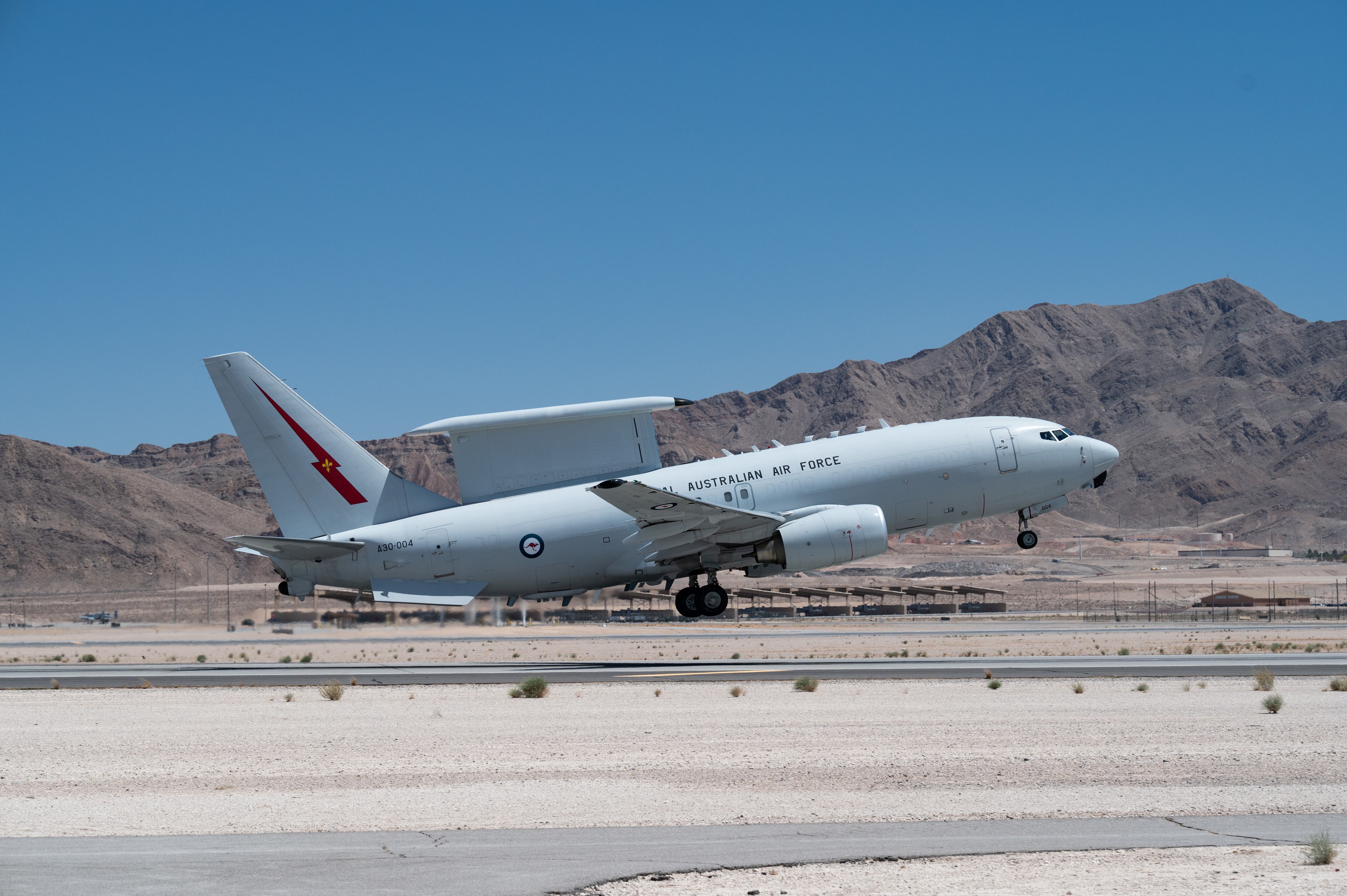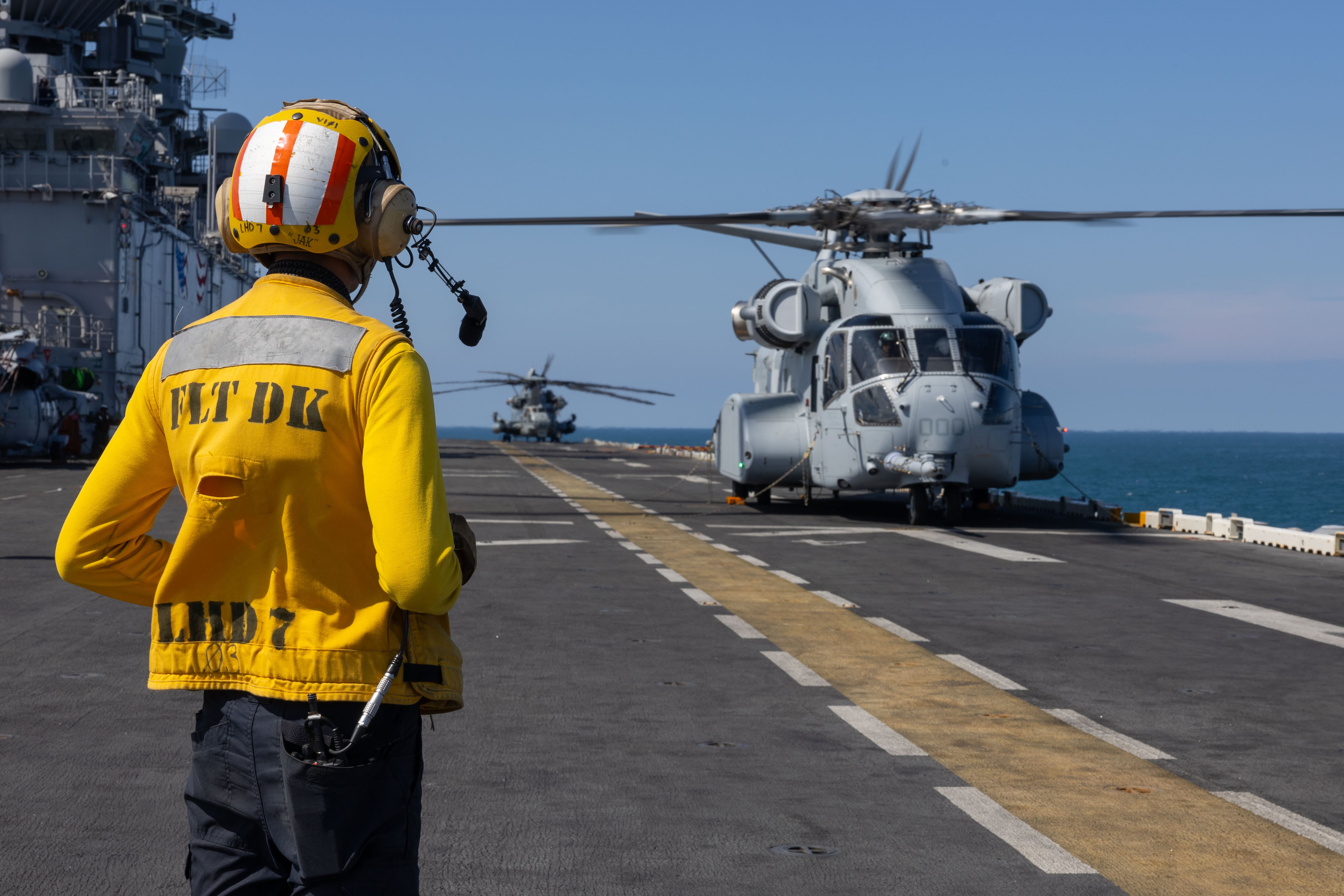WASHINGTON — The compromise National Defense Authorization Act released by lawmakers Tuesday would grant the Air Force’s long-awaited wish to start retiring the A-10 Warthog.
The $858 billion plan would also add more F-35s, EC-37B Compass Call aircraft and HH-60W Jolly Green II combat rescue helicopters, and provide $301 million more to speed up the acquisition of the E-7 Wedgetail.
The approval to retire 21 A-10s represents a thaw in a years-long disagreement between the service and lawmakers over the fate of the stalwart, but aging, attack plane. Over 20 years of war in Iraq, Afghanistan and against the Islamic State, the Fairchild Republic-made A-10 flew many close air support missions, using its distinctive 30mm GAU-8/A cannon to defend countless ground troops.
But the Air Force has for years said that the A-10, which flies low and slow, would not be able to survive a war against a major adversary with modern air defenses, such as China.
“The A-10 is a great platform for a [permissive] environment,” Air Force Chief of Staff Gen. CQ Brown told lawmakers in April. “I don’t see very many [permissive] environments that we’re going to roll into in the future.”
The service has repeatedly tried to cut A-10s and use the money to modernize other aspects of its fleet, but Congress has continually rebuffed those efforts. Most recently, it rejected an Air Force request to cut 42 A-10s in the 2022 NDAA.
Now, that has changed. The Air Force’s 2023 budget request asked for permission to cut 21 A-10s at Fort Wayne Air National Guard Base in Indiana, and replace that squadron’s planes with an equal number of F-16s.
More F-35s, Compass Calls
The NDAA also grants the Air Force’s wish to fund four additional EC-37B Compass Call electronic warfare aircraft to replace the aging EC-130H. When the service released its unfunded priorities list in April, it said those four additional Compass Calls would cost $979 million to buy four used Gulfstream G550 business jets, as well as spare engines and kits and components needed for contractor L3Harris to modify them.
The additional four new aircraft will eventually leave the Air Force with a next-generation Compass Call fleet of 10.

And the NDAA provides another five Lockheed Martin-made F-35A fighters for the Air Force, which would bring the number up to 38.
The Air Force originally asked for funding to buy 33 F-35As in 2023, which was lower than the 48 the service asked for in 2022. Secretary Frank Kendall said the Air Force wanted to use the money freed up by buying fewer F-35s to develop the Next Generation Air Dominance platform, work on a new, advanced engine for the F-35 and more quickly bring on the F-15EX Eagle II.
A few months later, the Air Force asked for another $921 million to add seven more F-35As to its 2023 procurement request, which would have brought the total procurement to 40. The service said then that the additional fighters would be Block 4 F-35As from Lot 17, with the APG-85 radar. Lawmakers now appear inclined to grant most — but not all — of that request.
The Navy and Marine Corps would also get 15 F-35Bs and 16 F-35Cs, as well as eight F-18E/F Super Hornet fighters, 12 CH-53K helicopters, seven E-2D Hawkeye aircraft, five KC-130J tankers, three unmanned MQ-4 Tritons and four MQ-25 Stingray aerial refueling drones.
For the F-35C, that would be slight increase from the original budget request, which asked for 13 of the carrier-based variant fighters. And it would be two more Hawkeyes than was in the original budget request.
Congress also wants the Government Accountability Office to audit the Pentagon’s efforts to modernize the F-35′s engines, and provide a briefing to lawmakers on the preliminary results by the end of February 2023.
The military is now considering whether to upgrade the F-35 with a new adaptive engine, which would use three streams of air and new technologies and materials to create more power, thrust, and cooling abilities, or to upgrade the current Pratt & Whitney F135 engine.
General Electric Aviation is pushing its prototype XA100 engine, developed under the Adaptive Engine Transition Program. While Pratt is also developing its own adaptive engine, dubbed XA101, the company said that will be a better fit for the Next Generation Air Dominance platform, and that their Enhanced Engine Program upgrades to the F135 will be safer, cheaper, and able to fit all variants of the F-35.
Lawmakers want the GAO to evaluate the F-35 Joint Program Office’s business case analysis, which is studying the various options available for delivering more power and cooling capabilities to the fighter.
GAO would also have to assess the progress made on each AETP prototype engine, and the costs and timeline for each modernization option to allow the fighter’s full Block 4 upgrades to carry more weapons, better recognize targets and conduct advanced electronic warfare.
Speeding up the Wedgetail, and more Whiskeys
The Air Force would get an additional $301 million to speed up the production and acquisition of two prototype E-7 Wedgetail aircraft, on top of the $227 million in research, development, test and evaluation funds the Air Force originally requested. The service plans to use those Boeing-made planes — now being flown by air forces of allied nations such as Australia — to replace the current fleet of E-3 Sentry, or Airborne Warning and Control System, planes, which were also made by Boeing.
The Air Force is planning to retire half its aging E-3 fleet, or 15 planes, in 2023. Because the first rapid prototype Wedgetail isn’t expected to be delivered until 2027, some lawmakers are concerned that might leave a gap in the service’s capabilities.

The NDAA would put some conditions on the Air Force’s plans to start retiring the AWACS. It would require the service to send the congressional defense committees a report on the proposed E-3 retirement, including an acquisition strategy for replacing it with the E-7.
And the NDAA would only allow the Air Force to fully retire 13 AWACS. Two of the E-3s the service had slated for the Boneyard would be kept as training aircraft, the compromise NDAA said.
Congress is also bumping up the Air Force’s procurement of HH-60W helicopters, nicknamed the Whiskey.
In the budget request, the Air Force said it planned to buy 10 more Whiskeys in 2023 — and then no more. This would have brought its total number of helicopter purchases to 75, a reduction of about one-third from the original plan of 113.
The Air Force is worried that a traditional combat rescue helicopter would not be able to survive in a highly contested airspace that would occur in a war against a major adversary such as China or Russia.
The NDAA would provide funding to double the number of HH-60Ws the Air Force would buy, bringing its total fleet to 85. The agreement would also include a provision, originally just in the House’s version of the bill, that would prohibit any funds from being used to terminate, or prepare to terminate, the HH-60W production line.
The NDAA would also block the Air Force’s plan to retire 33 Block 20 F-22s, at least for now. Those F-22s, originally made by Lockheed, are not combat-capable and are now primarily being used for training purposes.
Lawmakers won’t allow the Air Force to retire those Raptors until the service sends Congress a detailed plan on how they would train F-22 pilots without the retired planes, without any hit to readiness or combat capability. The NDAA will not require the Air Force to upgrade those F-22s.
And the NDAA would continue blocking the Air Force from retiring any further B-1B Lancer bombers — which were originally made by Rockwell International, now part of Boeing — or associated personnel until the end of September 2023. Last year’s NDAA had a similar restriction, but the original version of the House’s version of the NDAA would have kept that prohibition in place until the end of September 2026.
The Air Force would also be prohibited from divesting any F-15 fighters beginning in October 2023, until Kendall sends lawmakers a report on how those retirements would affect the service’s missions, personnel, force structure and budgeting, and how it plans to solve any problems that might arise.
Congress also wants the report to say whether Kendall plans to change any plans for the procurement of new F-15EXs, made by Boeing.
The NDAA also grants Air Combat Command and Air Force Global Strike Command permission to upgrade the ejection seats of T-38A Talons that haven’t already had an upgrade.
Stephen Losey is the air warfare reporter for Defense News. He previously covered leadership and personnel issues at Air Force Times, and the Pentagon, special operations and air warfare at Military.com. He has traveled to the Middle East to cover U.S. Air Force operations.





